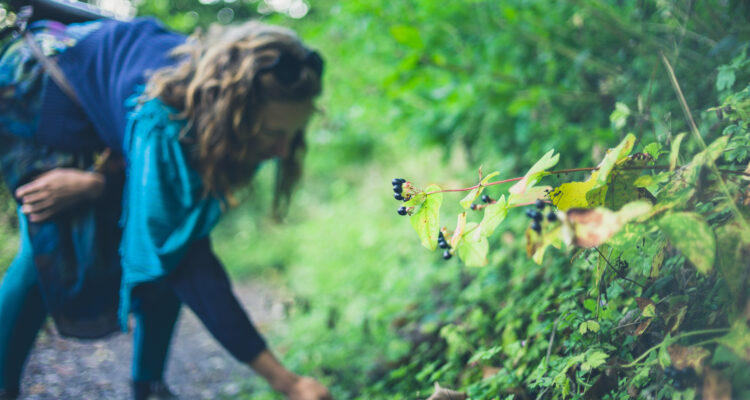One of the most delightful activities for nature enthusiasts is foraging. Foraging means searching for and collecting food from the wild.
Foraging used to be how people got food before farming, and some still do it today for cultural or personal reasons. Whether you’re a seasoned forager or a curious beginner, this blog will guide you through the seasons, highlighting the delightful finds waiting to be discovered in the UK’s wild spaces.
Firstly it’s important to know which things are safe to eat and how to forage responsibly.
Foraging Etiquette and Safety:
When embarking on a foraging adventure, it is essential to adhere to responsible foraging practices. Here are a few key guidelines to follow:
- Safety first: Be cautious when identifying plants and mushrooms; misidentification can have severe consequences. Always cross-reference multiple reliable sources and consider seeking expert advice.
- Seek permission: Always obtain permission from landowners before foraging on private land.
- Respect nature: Harvest only what you need, leaving enough for wildlife and future foragers.
- Preserve habitats: Avoid damaging plants or their surroundings while harvesting.
- Learn from experts: Join local foraging groups, workshops, or consult experienced foragers to enhance your knowledge and safety.
What Can I Forage in Spring?
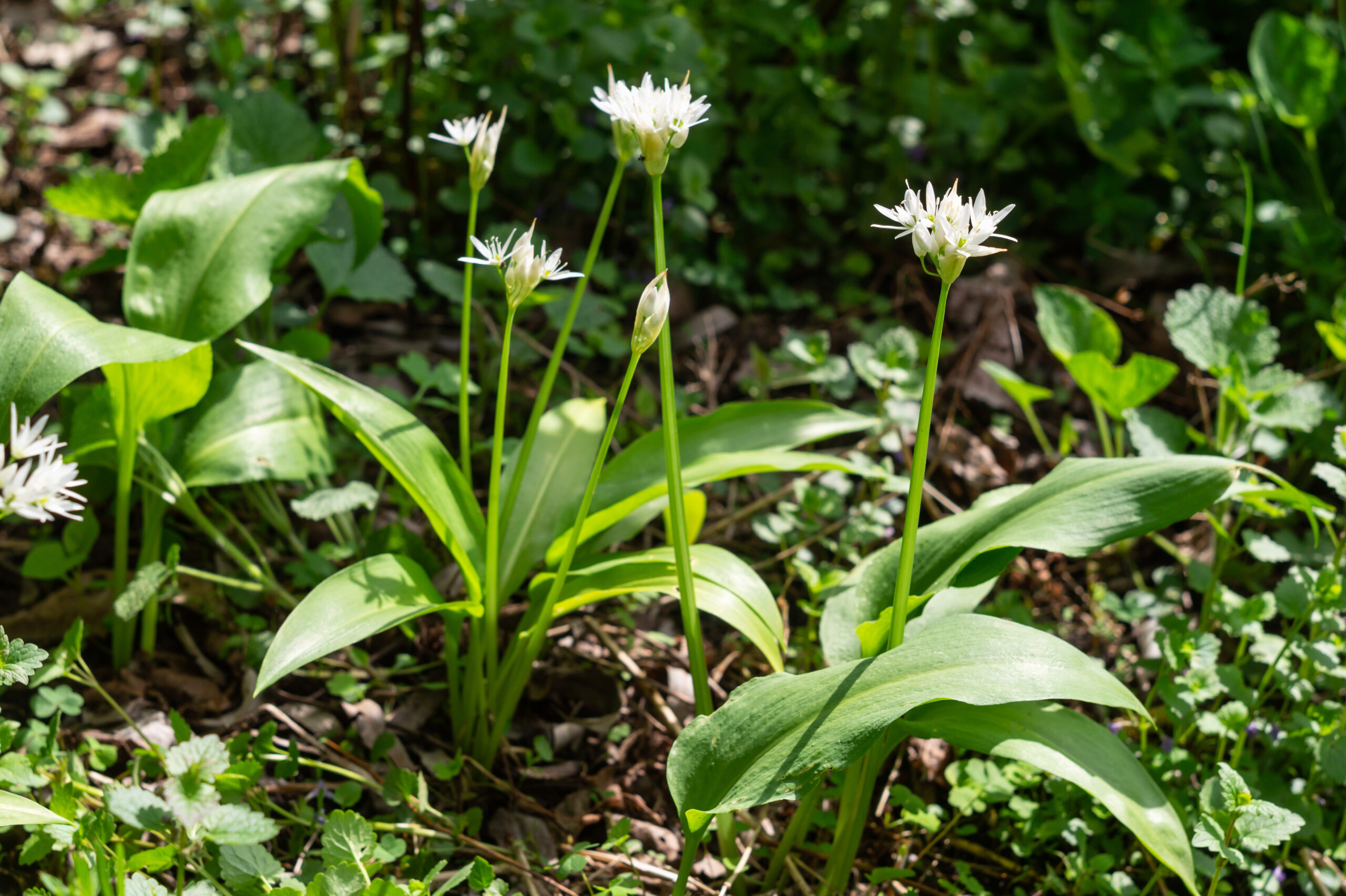
Spring is defined in the UK as starting at the end of March to the end of June. As winter fades away, the woodlands and meadows come alive with an array of delightful edible treats. Don’t forget to wear gloves while harvesting, and wash everything well when you get home before eating.
Wild Garlic
Spring is the perfect time to keep an eye out for vibrant wild garlic, which will be easy to find because it smells just like the garlic you’ll have in your kitchen. It has wide long leaves and white flowers. It grows on the shady floor of ancient woodlands or hedgerows as it doesn’t need too much sun. It can be found throughout the UK, but it’s most common in the south.
What Can You Make with Wild Garlic?
Its leaves are perfect for salads or blending up into a pesto – lending a delicious light garlicky flavour to your dishes. You can also blanch the leaves in place of spinach. The flowers are also edible, and they’ll look super pretty balanced on any soup or salad. There are some fantastic recipes to make with this easy-to-find native plant.
Nettles
Alongside wild garlic, you may stumble upon the first young nettles, which are rich in vitamins and minerals. If their sting puts you off, don’t worry, it goes away when they are boiled for 2-3 minutes. Just wear some gardening gloves and bring scissors with you to safely pick them. It’s only the top four to six leaves that you want which will be succulent and green.
What Can You Make with Nettles?
If you boil nettles, you can use them in place of lots of popular greens like Spinach or Kale.
Commonly known as ‘Stinging Nettles’, they are full of iron, calcium, and magnesium which makes them incredibly nutritious. They are famously paired with lemon flavours, fennel seeds, and goat’s cheese. Use them to make a risotto, a delicious soup, or a soothing tea.
What can I Forage in Summer?
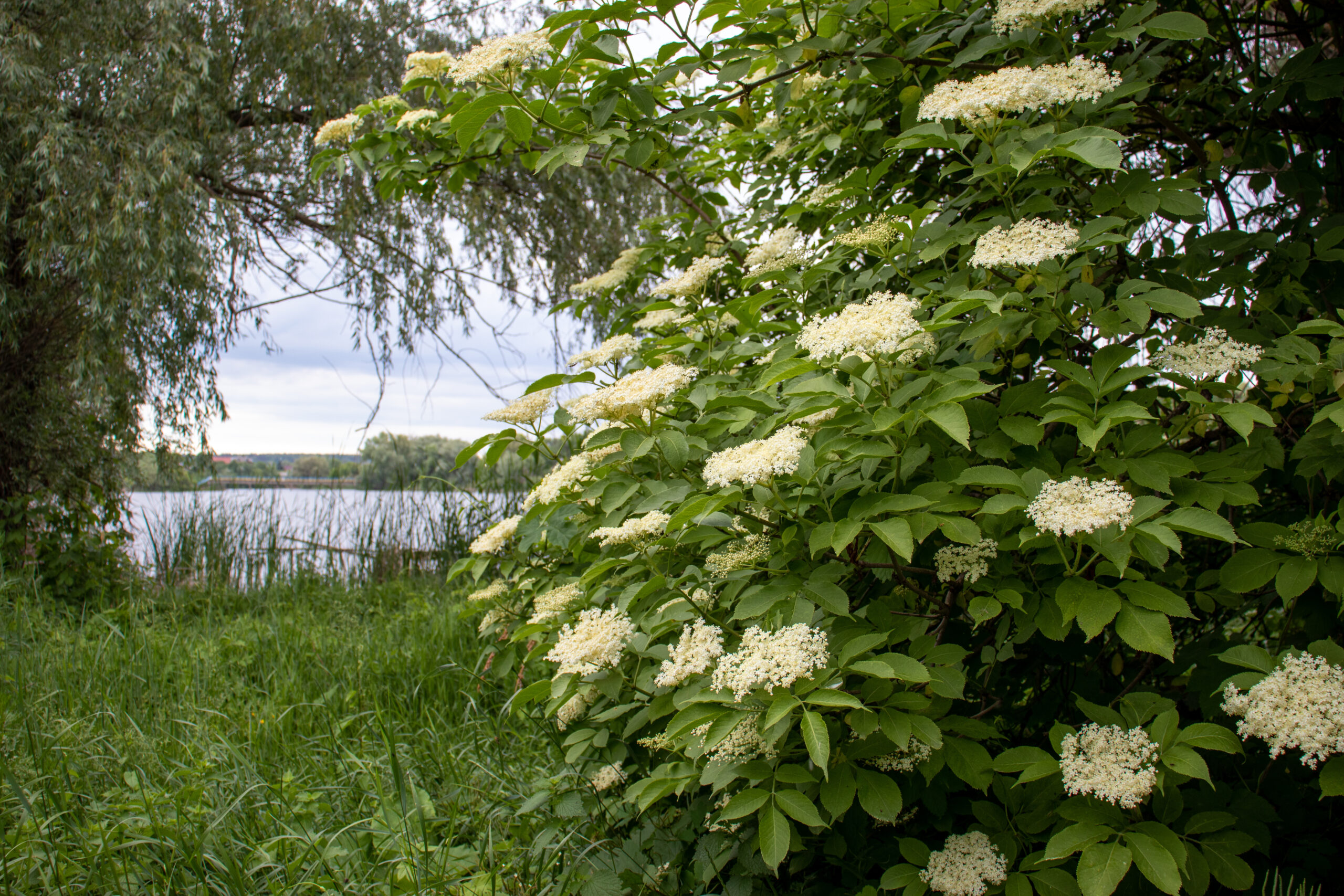
Summer is the perfect time for foraging, with hedgerows and coastal areas offering an impressive variety of edible resources. In the UK summer is officially late June to late September.
Elderflowers and Elderberries
Keep an eye out for elderflower trees in the UK! They bloom with beautiful white tiny flowers. In August, they also produce dark elderberries. The Elder is a common shrub or tree found all over the country, in woods and hedgerows – pretty much everywhere!
What can I make with Elderflowers and Elderberries?
Their pretty flowers can be used to make refreshing cordials, gins, champagne and taste delicious infused into desserts. You can even fry them to make fritters like you would with a courgette flower. Elderberries can be cooked for jams, fruit pies, and even elderberry wine.
Wild Berries
Blackberries are the easiest foraged fruits to find. They grow almost anywhere, from hedgerows, to woodlands, and even at the roadside. Just watch out for the brambles!
Wild raspberries can also be found in similar places. People often mistake them for unripe blackberries, but they are softer and have a leaf shape.
Wild strawberries are another summer gem. They can be found in woodlands, meadows, hedgerows, and even in gardens. They are smaller than the supermarket versions, but just as delicious.
What Can I Make with Wild Berries?
Wild strawberries and raspberries are perfect for snacking. Remember to always wash them before eating.
You may remember picking blackberries as a child, so you’ll know they are ideal for jams, pies, or crumbles. Here are some jam recipes good for any of these berries.
What can I Forage in Autumn?
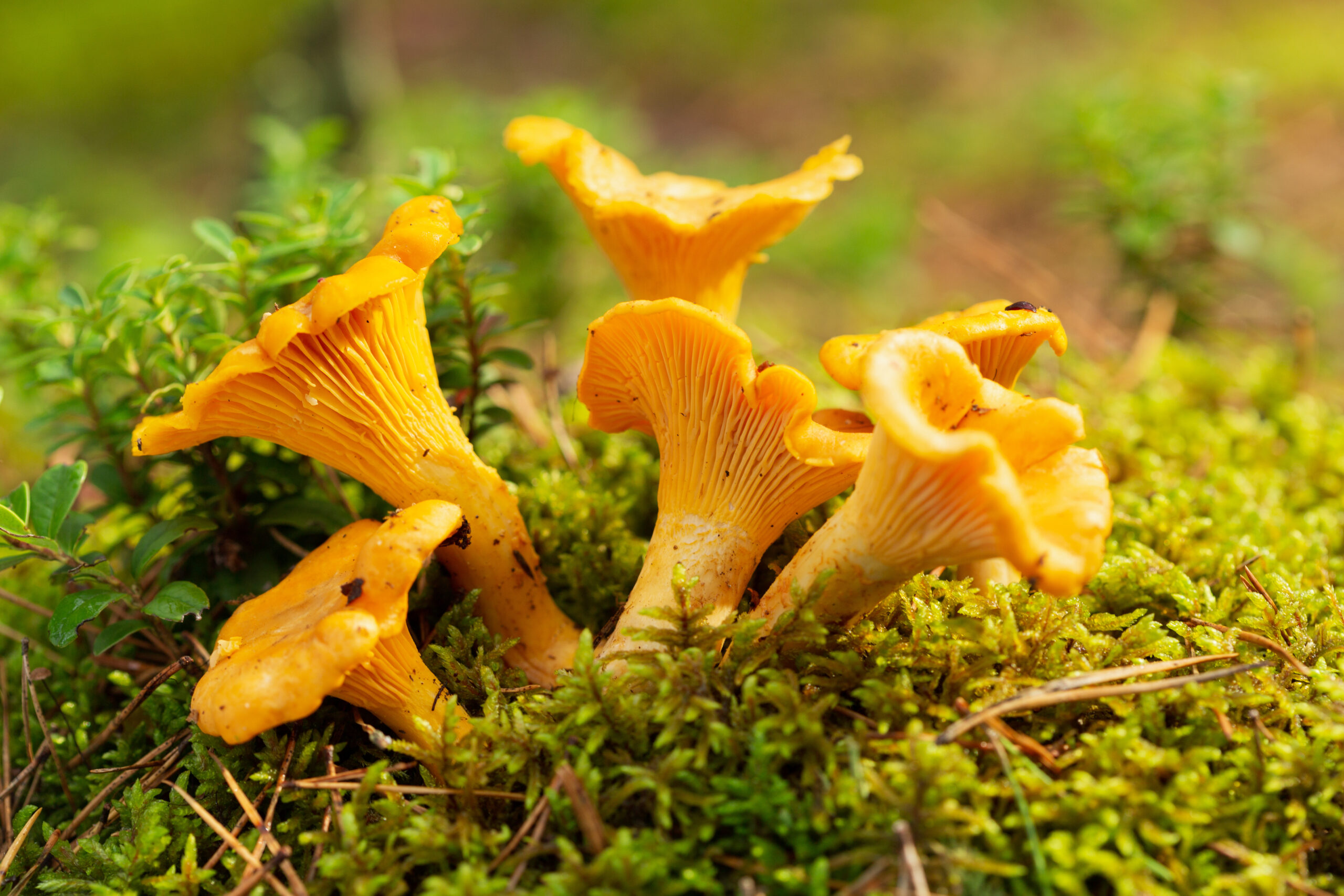
The woodlands and countryside turn into a treasure trove of foods to forage during the autumn months. Autumn in the UK is usually from September to November.
Mushrooms
Foragers eagerly anticipate the arrival of mushrooms, such as the prized cep (porcini), chanterelles, or field mushrooms. However, it’s important to remember to be extremely cautious and consider expert guidance when mushroom foraging. There are risks associated with misidentification, which can be fatal. Consider booking a mushroom foraging course to make sure you’re safe.
What can I Make with Wild Mushrooms?
Soups, sauces, and risottos are all great options. Basically, anything you would do with shop-bought mushrooms. Here are some fantastic recipes for wild mushrooms you’ve foraged.
Nuts
Autumn is the season for foraging sweet chestnuts walnuts and hazelnuts. Try not to take them all though as they are valuable food for wildlife going into winter. You won’t have to look far for Hazel trees as they grow commonly throughout the UK.
What Can I Make with Nuts?
You can use foraged walnuts hazelnuts and sweet chestnuts in all kinds of sweet and savoury dishes to add a delicious, nutty flavour to cakes, breads and pestos. We especially like this apple, pear and walnut crumble.
What can I Forage in Winter?
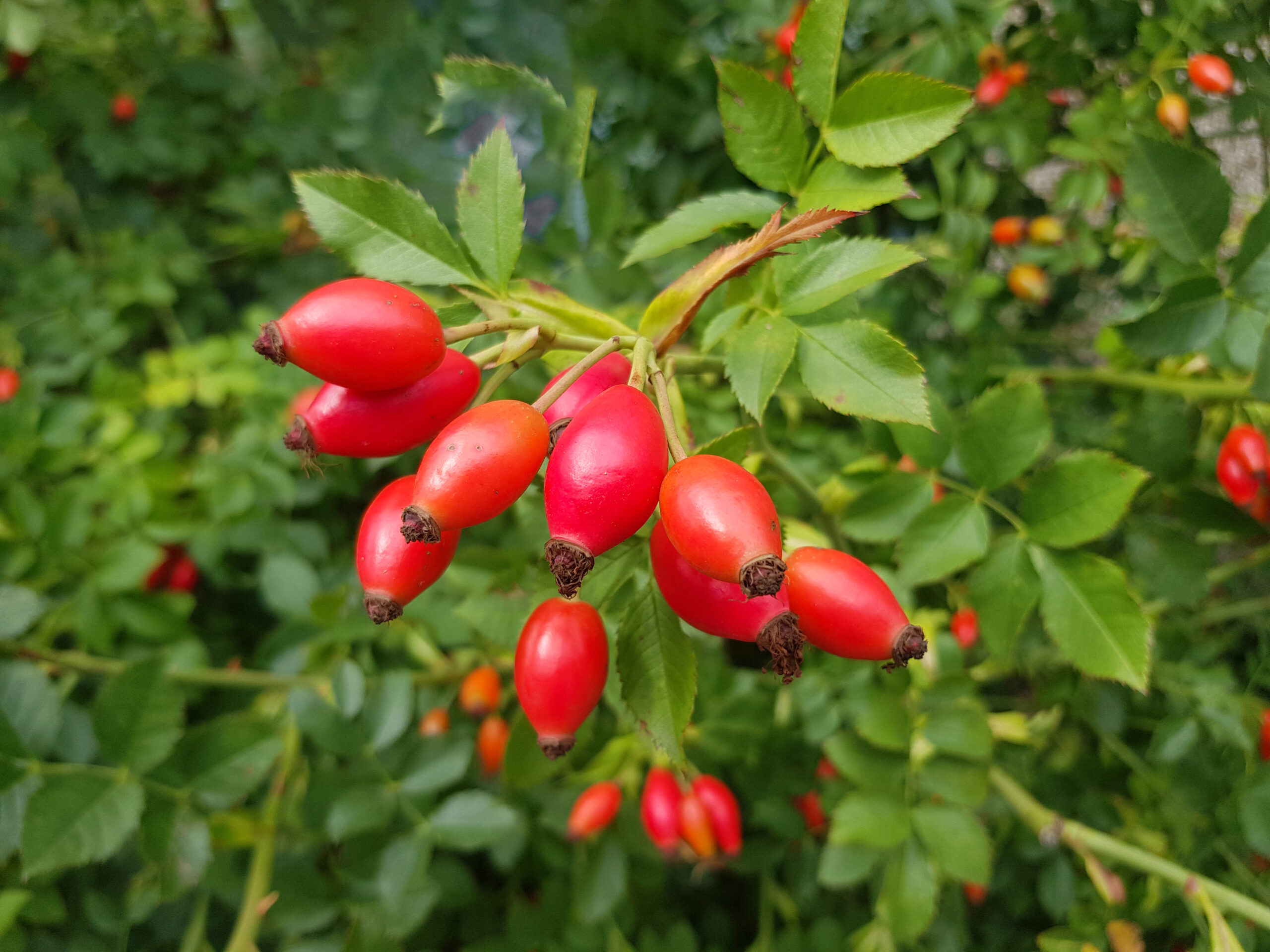
While winter may seem like a quiet time for foraging, there are still delicious finds to be discovered. Winter in the UK is from December to February.
Rosehips
Seek out rosehips, the bright red or orange fruit of wild roses. All roses produce hips, and all of them are edible. These little powerhouses are packed with vitamin C and can be found in fields, roadsides, and other open places.
What can I make with Rosehips?
They can be used to make cordials, syrups, jellies, or added to herbal teas. You may have to remove the seeds and hairs that are inside before consuming them as they can irritate your mouth. Note some recipes you’ll need to leave the seeds and hairs while cooking and then strain them out afterwards, so check your chosen recipe!
Foraging is a remarkable way to connect with nature, engage with the seasons, and discover the treasures found in the UK’s wilderness. So, grab your baskets and venture out to explore the bountiful offerings of the great British outdoors!
